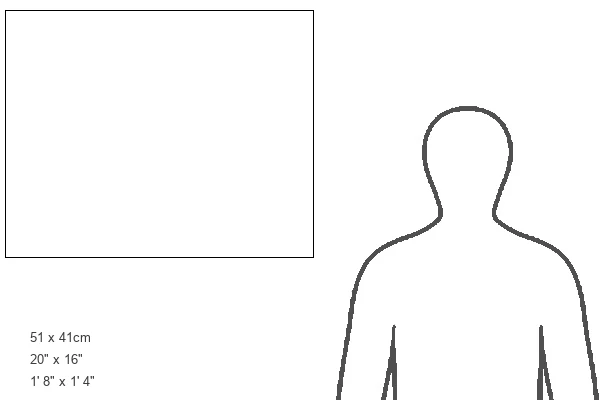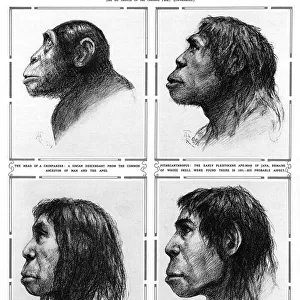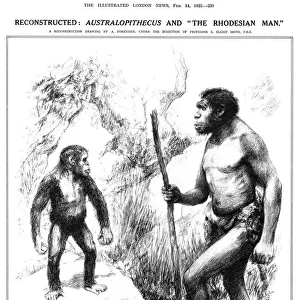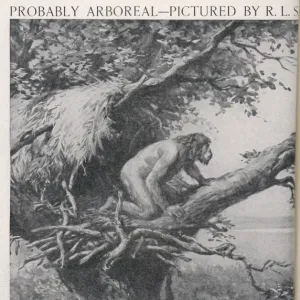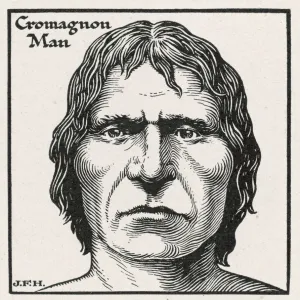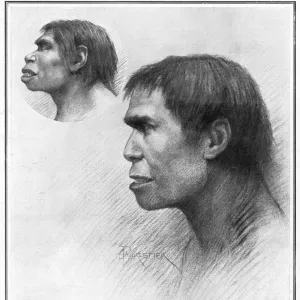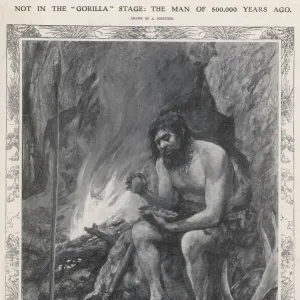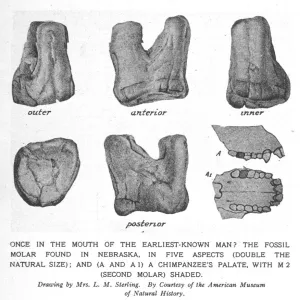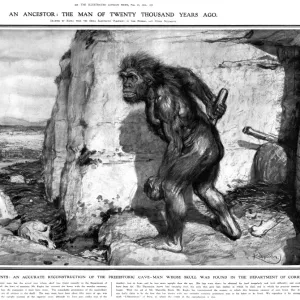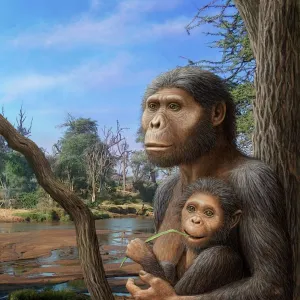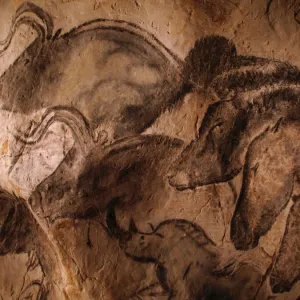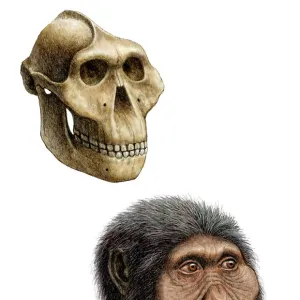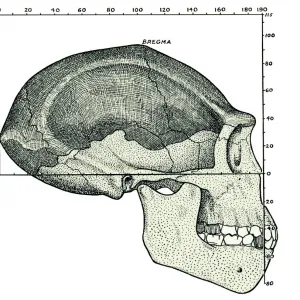Metal Print > Europe > United Kingdom > England > London > Museums > Natural History Museum
Metal Print : Homo rudolfensis (KNM-ER 1470) Homo habilis (KNM-ER 1813)
![]()

Metal Prints From Mary Evans Picture Library
Homo rudolfensis (KNM-ER 1470) Homo habilis (KNM-ER 1813)
On the left, KNM-ER 1470 (also attributed to H. rudolfensis). On the right, KNM-ER 1813. Both skulls are about 2 million years old. Held at The Natural History Museum, London
Mary Evans Picture Library makes available wonderful images created for people to enjoy over the centuries
Media ID 8593117
© Mary Evans Picture Library 2015 - https://copyrighthub.org/s0/hub1/creation/maryevans/MaryEvansPictureID/10712529
Bone Cast Fossil Fossilised Hominini Homo Homo Habilis Lower Palaeolithic Palaeolithic Era Paleolithic Prehistoric Skull Stone Age Homo Rudolfensis Knm Er 1470
16"x20" (51x41cm) Metal Print
Discover the fascinating world of early human ancestors with our Media Storehouse Metal Prints featuring Homo rudolfensis (KNM-ER 1470) and Homo habilis (KNM-ER 1813). These exquisitely detailed prints showcase two significant discoveries from The Natural History Museum, London, both approximately 2 million years old. Each metal print showcases high-quality images of these ancient skulls, providing a captivating and durable addition to any home or office space. Rights Managed through Mary Evans Prints Online.
Made with durable metal and luxurious printing techniques, our metal photo prints go beyond traditional canvases, adding a cool, modern touch to your space. Wall mount on back. Eco-friendly 100% post-consumer recycled ChromaLuxe aluminum surface. The thickness of the print is 0.045". Featuring a Scratch-resistant surface and Rounded corners. Backing hangers are attached to the back of the print and float the print 1/2-inch off the wall when hung, the choice of hanger may vary depending on size and International orders will come with Float Mount hangers only. Finished with a brilliant white high gloss surface for unsurpassed detail and vibrance. Printed using Dye-Sublimation and for best care we recommend a non-ammonia glass cleaner, water, or isopropyl (rubbing) alcohol to prevent harming the print surface. We recommend using a clean, lint-free cloth to wipe off the print. The ultra-hard surface is scratch-resistant, waterproof and weatherproof. Avoid direct sunlight exposure.
Made with durable metal and luxurious printing techniques, metal prints bring images to life and add a modern touch to any space
Estimated Image Size (if not cropped) is 50.8cm x 40.6cm (20" x 16")
Estimated Product Size is 51.4cm x 41.2cm (20.2" x 16.2")
These are individually made so all sizes are approximate
Artwork printed orientated as per the preview above, with landscape (horizontal) orientation to match the source image.
FEATURES IN THESE COLLECTIONS
> Arts
> Artists
> P
> Paleolithic Paleolithic
> Europe
> United Kingdom
> England
> London
> Museums
> Natural History Museum
EDITORS COMMENTS
In this photograph, the skulls of two early hominins, Homo rudolfensis (KNM-ER 1470) and Homo habilis (KNM-ER 1813), are showcased side by side at The Natural History Museum in London. Both skulls, approximately 2 million years old, offer a glimpse into our ancestors' evolutionary past, shedding light on the intriguing developments that occurred during the Paleolithic Era. On the left, the skull attributed to Homo rudolfensis (KNM-ER 1470) exhibits a number of distinctive features, including a prominent brow ridge, a large cranial capacity, and a recessed face. These characteristics suggest that this early hominin may have had a more robust build and a stronger jaw, potentially indicating a diet that included harder foods. In contrast, the skull on the right, identified as Homo habilis (KNM-ER 1813), displays a smaller braincase and a more protruding face. This hominin is believed to have been more gracile and agile, with a more flexible spine and a dexterous hand, which may have been well-suited for the use of tools. The discovery of these fossils has significantly expanded our understanding of human evolution, revealing the complex interplay of physical adaptations that enabled our ancestors to thrive in the diverse environments of the African savannah during the Paleolithic Era. As we continue to uncover the secrets of our past, these fascinating discoveries serve as a reminder of the remarkable journey that led to the emergence of Homo sapiens.
MADE IN THE USA
Safe Shipping with 30 Day Money Back Guarantee
FREE PERSONALISATION*
We are proud to offer a range of customisation features including Personalised Captions, Color Filters and Picture Zoom Tools
SECURE PAYMENTS
We happily accept a wide range of payment options so you can pay for the things you need in the way that is most convenient for you
* Options may vary by product and licensing agreement. Zoomed Pictures can be adjusted in the Basket.


